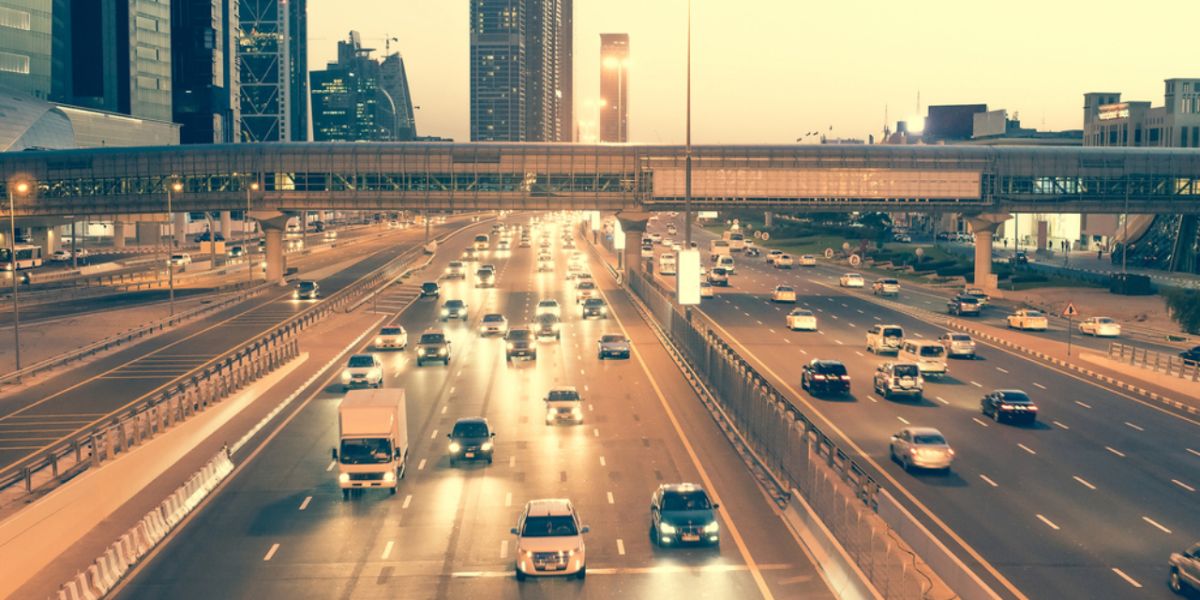
The desert inhabitants of the United Arab Emirates have used camels to get around for over 4,000 years. Before the 1970s, Dubai had very few cars and even fewer roads. The first proper road connecting Dubai to Ras al Khaimah was built in 1971. Today, Dubai has an extensive network of highways and roads while many more are in the pipeline.
Getting around will probably be one of your main concerns when moving to Dubai, whether for work or studies. Since it will take some time until you get a proper driver's license, it's a good idea to learn a bit more about public transport in Dubai.
Taxis in Dubai
Taxis are very popular in Dubai and are easily available like in the rest of the country. It's worth noting that the government regulates taxi fares. Most of the taxis in Dubai have a fare meter that calculates the amount you'll have to pay for your trip, and the minimum fare is always AED 12. You can find taxi stands throughout the city and can usually hail a taxi from the side of the road. You also have a few mobile applications like Careem and Uber which help in finding the right car at an affordable price more rapidly. Dubai's local Hala Taxi can also be booked through the Careem app for added convenience. Dubai is the only city in the UAE with a road toll system called "Salik". If you pass a toll gate in a taxi, an additional AED 4 will apply to the final fare.
Buses and tramways in Dubai
The bus is another popular means of transportation in Dubai. The city has an extensive bus network with 119 internal lines, 35 of which are linked to metro stations, 12 intercity lines going to other emirates, and 8 are fast lines.
Besides buses, you also can use the tram and metro network. The Dubai Tram Service came into operation in November 2014. Today, the track stretches over an area of 14.5 km and serves eleven stations with two lines. From Monday to Saturday, trams operate from 06:00 am to 01:00 am the next day. On Sunday, however, they start at 09:00 am.
The same Nol card that is used on the metro can be used to access buses and trams.
Metro in Dubai
The Dubai Metro came into operation in 2009 and has two lines: the red line and the green line covering 74.6 km and 47 stations. The Dubai Metro has a first-class cabin, also called the Gold Class. With a Gold Class pass, you get a comfortable seat and amenities. Since Dubai's metro system is arranged into multiple zones, the cost of a ride can vary significantly. A trip in the Silver class within a specific zone could cost as little as 3 AED. On the other hand, a single ride with a Gold Class ticket allows you to cross all zones for around 19 AED. The route is quite straightforward and easy to get used to, and a map can be found on the RTA website.
You can purchase single-use tickets at any of the metro stations or buy and top up your Nol cards at the designated counters or kiosks at each station.
Ferries in Dubai
In Dubai, you can also travel over the water channels using abras or ferries. Abras are water taxis that operate over Dubai Creek. The ferries are also operated by RTA and include 6 major routes.
Trips cost 50 AED, and each ferry can seat up to 98 people.
Water taxis in Dubai
Other than the ferries, you can beat Dubai's busy traffic by using one of the water taxis. There are currently 40 stations spread out across two different zones, connecting all major parts of the city.
Water taxis can seat up to 20 passengers, and fares can range from 55 AED to 205 AED, depending on the route you take.
Carpooling in Dubai
Some residents use neither of the means of transportation mentioned above. Today, carpooling has almost become a lifestyle in Dubai since it allows you to cut costs. Like-minded people have created carpooling groups on social media to promote this initiative.
Useful links:
We do our best to provide accurate and up to date information. However, if you have noticed any inaccuracies in this article, please let us know in the comments section below.








